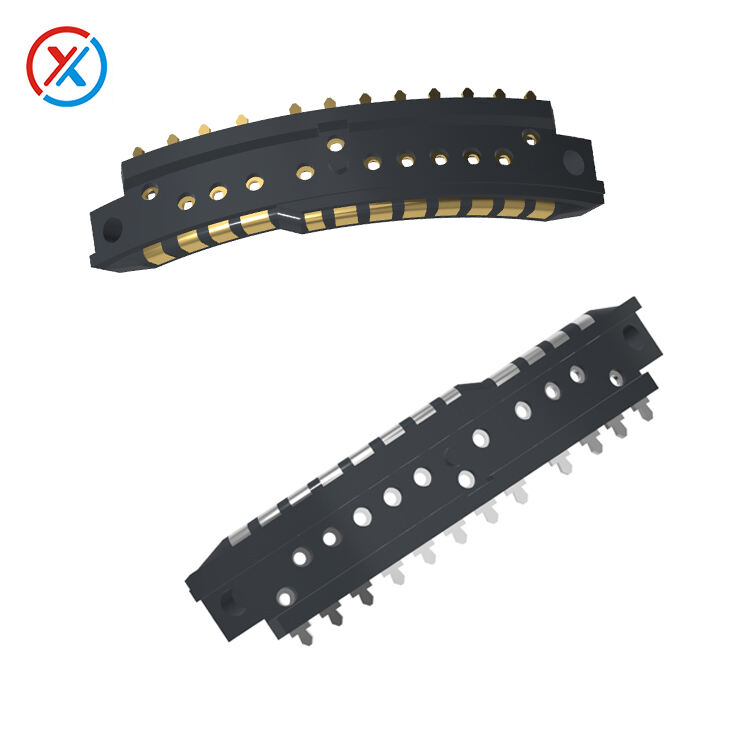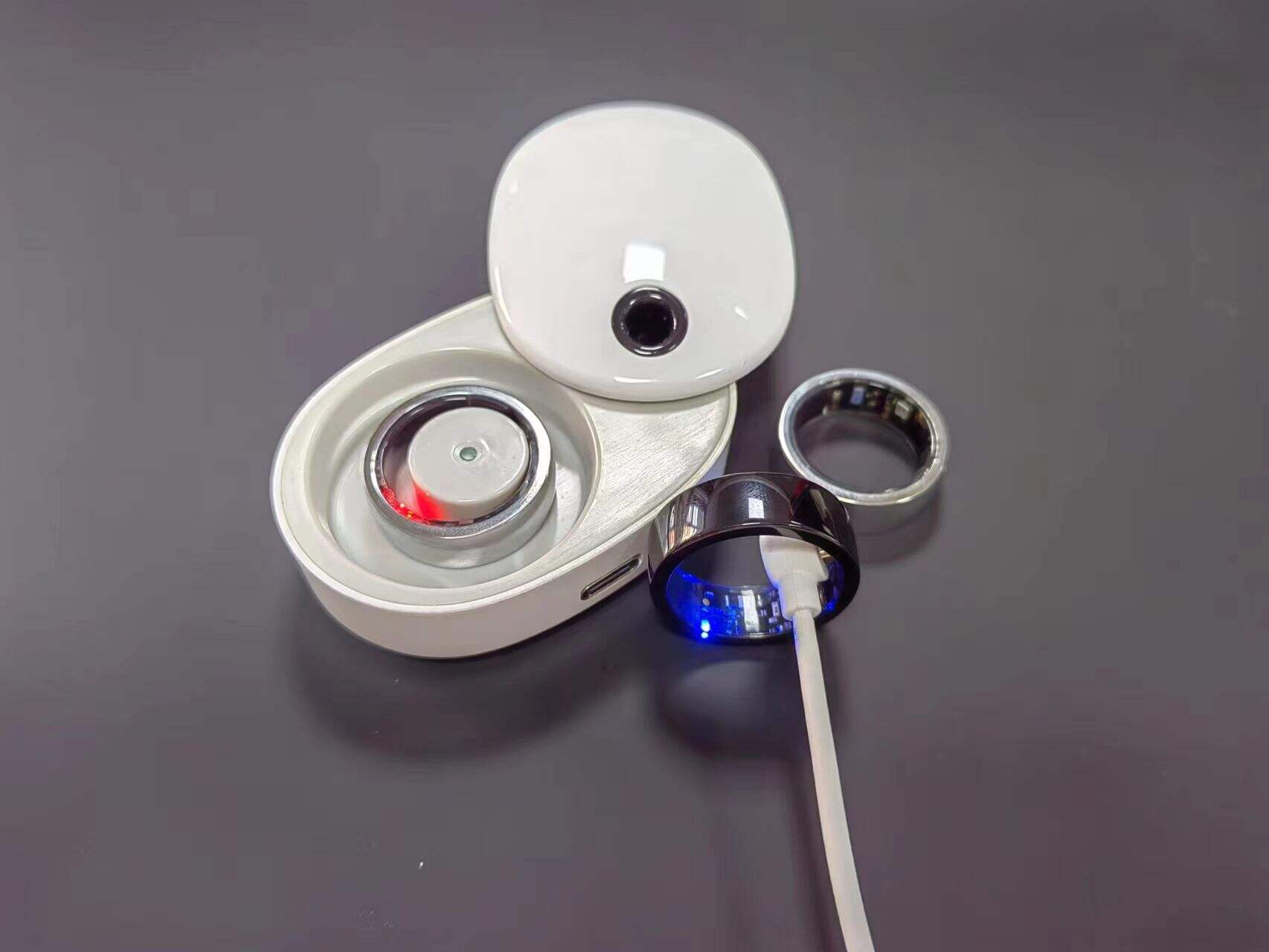What Makes Camera Lens Connector Critical in Imaging?
Signal Transmission Precision in Camera Lens Connectors
Camera lens connectors play a crucial role in ensuring effective communication between the lens and sensor. Precision in this communication is vital for accurate image capture, as connectors transmit signals essential for aligning lens adjustments with sensor capabilities. These signals can be analog or digital and influence the overall performance of imaging systems, thereby impacting factors like image quality, speed, and functionality. Ensuring high-precision connectors is crucial, especially considering data on failure rates related to poor signal transmission. A study published in the "Journal of Camera Technology" indicates that one-third of camera malfunctions occur due to ineffective signal transmission via connectors, highlighting the necessity for precision engineering in connector design to reduce failure rates and optimize imaging quality.
Lens-Sensor Communication Fundamentals
The communication between a camera lens and its sensor is pivotal in achieving outstanding image quality. Connectors facilitate this communication by transmitting signals that dictate focus adjustments and aperture control, making precision essential for accurate image capture. The types of signals transmitted vary between analog, which processes continuous information like light variations, and digital, where specific programmed adjustments take precedence. The performance of imaging systems hinges on these signals' reliability. Industry data shows that poor signal transmission can result in notable failure rates, affecting a camera's functionality. For instance, a reputable industry source notes that a lack of precision in connectors can lead to a 20% increase in imaging errors, emphasizing the need for high-quality connectors to enhance image fidelity.
Real-time Data Transfer Mechanics
Real-time data transfer between the camera lens and body is a sophisticated process influenced by speed and bandwidth. High-speed connectors such as USB-C and HDMI are central to ensuring seamless data transfer without degradation, enabling quick communication between various camera components. These connectors support efficient data processing by maintaining signal integrity even at high transfer rates. Additionally, different connector architectures are designed to accommodate the varying requirements of cameras, particularly in high-performance models where meticulous speed measurements are critical. Industry benchmarks validate the efficiency of advanced connectors, showing improvements in data transfer rates by up to 30%, thus reflecting their importance in real-time imaging scenarios.
In conclusion, the precision and efficiency of signal transmission and real-time data transfer in camera lens connectors are vital for maintaining high-performance in imaging devices. As technology progresses, the demand for sophisticated connector designs continues to grow, ensuring that cameras not only meet but exceed user expectations.
Core Functions in Modern Imaging Systems
Autofocus and Stabilization Support
Connectors play a fundamental role in facilitating autofocus technology in modern cameras. They enable precise communication between the lens and camera body, which is crucial for achieving quick and accurate focus adjustments. For instance, in Canon's advanced mirrorless cameras, connectors ensure that focus is achieved efficiently, even when capturing fast-moving subjects. Moreover, the design of connectors significantly influences stabilization features. Poor connector design can lead to misinformation or delays, thereby impacting the quality of images, particularly in low-light conditions where stability is crucial. Statistics show that improvements in connector technology have substantially enhanced autofocus performance, as evidenced in studies by experts from leading photography publications like Digital Camera World.
Image Quality Preservation Mechanisms
Connectors are critical in maintaining image quality, especially within high-resolution imaging systems. They ensure seamless data transmission from the lens to the camera sensor, minimizing loss and distortion. Design features such as the use of gold plating and high-quality materials in connectors improve transmission characteristics, reducing artifacts effectively. For instance, Sony's professional-grade cameras employ connectors designed with premium materials to ensure consistent image quality across various shooting conditions. Quality tests have demonstrated the impact of superior connectors on reducing image degradation. According to tests published in the Journal of Imaging Science, cameras equipped with high-precision connectors exhibit minimal signal interference, thereby preserving the integrity of high-resolution images significantly.
Noise Reduction and Electrical Integrity
Interference Mitigation Techniques
In camera systems, electrical noise can significantly degrade image quality, and connectors play a pivotal role in reducing these interferences. Common sources of noise include electromagnetic interference (EMI) from external devices and internal crosstalk within the system. To mitigate these issues, techniques such as twisted pair cabling, ferrites, and proper grounding practices are employed. Twisted pair cabling helps in minimizing electromagnetic interference by canceling out the noise fields. Ferrites, which are magnetic materials, can absorb high-frequency interference, thus enhancing signal clarity. Grounding practices ensure that unwanted charge buildup does not distort the signals. Research studies have demonstrated the effectiveness of these strategies, showing how they can improve camera performance in professional setups. These findings reinforce the importance of robust Camera Lens Connectors that facilitate clear communication in complex imaging environments.
Shielding Methodologies
Shielding methodologies are crucial in connectors to safeguard against EMI and radio-frequency interference (RFI). Different types of shielding, such as full metal shielding and foil shielding, provide varying degrees of protection. Full metal shielding encompasses the entire connector with conductive metals, offering superior resistance against external interferences. In contrast, foil shielding, which uses a thin layer of aluminum or copper, is more cost-effective and lighter, making it suitable for less sensitive applications. The choice of shielding impacts signal integrity; for instance, full metal shielding maintains a cleaner signal by extensively blocking external noise, whereas foil might introduce slight signal attenuation. Case studies from leading connector manufacturers illustrate how specific shielding designs can improve image transmission efficiency and reduce artifacts, thereby ensuring high-quality imaging outputs. These methodologies highlight the technological advancements in Camera Lens Connector designs and their critical role in maintaining electrical integrity.
Miniaturization in Connector Designs
High-Density Layout Principles
The trend towards miniaturization in camera designs is fundamentally reshaping the layout and design of connectors, leading to the emergence of high-density connector layouts. As cameras become smaller and more sophisticated, there is a pressing need for connectors that support the high pin count and board space optimization. These high-density connectors are particularly crucial as they enable more compact designs without compromising functionality. Industry statistics reveal a burgeoning market demand for smaller, more efficient camera systems as consumers seek portability without sacrificing performance. By integrating high-density layouts, manufacturers can meet these demands effectively while ensuring that the essential connectivity features are preserved.

Space Optimization Strategies
To optimize space within the miniaturized camera bodies, various design strategies are employed in connector manufacturing. Engineers focus on achieving a balance between the size and functionality of connectors, taking into account factors like maximum voltage and current capacity. Innovative connector technologies now offer space-saving solutions, such as using compact designs that maintain high performance standards. Recent advancements in connector technology showcase examples, like connectors designed to fit snugly within limited spaces while allowing for robust electrical connections. Such innovations ensure that modern cameras can deliver high-quality performance despite their reduced size, providing photographers with powerful tools in a compact form factor.
Incorporating these strategies into connector design allows camera manufacturers to keep pace with technological advancements, providing users with devices that are not only potent but also incredibly portable. As miniaturization continues to shape the future of photography equipment, the role of high-density and space-optimized connectors becomes more pivotal.
Reliability Engineering Standards
Durability Testing Protocols
Durability testing protocols for connectors play a crucial role in ensuring their long-term reliability across diverse environments. Connectors, including Camera Lens Connectors, undergo rigorous evaluations to withstand challenging conditions. Among the common testing methodologies are vibration tests, thermal cycling, and humidity tests. Vibration tests simulate the mechanical stress experienced during transport and installation, while thermal cycling assesses the connector's ability to function across varying temperatures. Humidity tests evaluate performance in damp or wet conditions. Industry standards such as ISO and IPC govern these testing requirements, providing a benchmark for quality assurance. Compliance with these standards ensures that connectors can endure daily wear and environmental challenges without compromising functionality.
Environmental Compliance
Environmental compliance is a pivotal aspect of connector manufacturing, driven by directives like RoHS (Restriction of Hazardous Substances) and REACH (Registration, Evaluation, Authorization, and Restriction of Chemicals). Adhering to these regulations impacts manufacturing processes and material selection, as companies strive to eliminate hazardous substances and promote sustainability. Meeting environmental regulations not only enhances brand reputation but also aligns with market trends towards eco-friendliness. Studies show a significant shift in consumer preference for environmentally-friendly technologies, emphasizing the importance of compliance. In the tech industry, sustainable practices are increasingly becoming a priority, reflecting the demand for green initiatives and influencing material choices in camera lens connectors and other components.
FAQ Section
What is the significance of precision in camera lens connectors?
Precision in camera lens connectors is crucial for ensuring effective communication between the lens and sensor, which is vital for accurate image capture and reducing failure rates.
How do autofocus and stabilization depend on connectors?
Connectors facilitate precise communication between the lens and camera body, impacting autofocus and stabilization features significantly.
What are shielding methodologies in connectors?
Shielding methodologies protect against electromagnetic interference (EMI) and radio-frequency interference (RFI), maintaining signal integrity and improving image transmission.
Why is environmental compliance important in connector manufacturing?
Compliance with environmental directives like RoHS and REACH ensures the use of sustainable materials, enhancing brand reputation and meeting the demand for eco-friendly technologies.
Hot News
-
Challenges for Pogo pin manufacturers in the AI era
2023-12-14
-
Teach you how to understand Pogo pin spline structure
2023-12-14
-
What products can Pogo pin be used in?
2023-12-14
-
How to choose Pogo pin connector
2023-12-14

 EN
EN
 AR
AR
 BG
BG
 HR
HR
 CS
CS
 DA
DA
 NL
NL
 FI
FI
 FR
FR
 DE
DE
 EL
EL
 HI
HI
 IT
IT
 JA
JA
 KO
KO
 PL
PL
 PT
PT
 RU
RU
 ES
ES
 SV
SV
 TL
TL
 IW
IW
 ID
ID
 LV
LV
 SR
SR
 UK
UK
 VI
VI
 GL
GL
 HU
HU
 TH
TH
 TR
TR
 AF
AF
 MS
MS
 SW
SW
 GA
GA
 CY
CY
 IS
IS
 BN
BN
 BS
BS
 NE
NE





